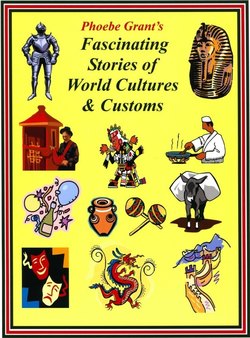Читать книгу Phoebe Grant's Fascinating Stories of World Cultures & Customs - Phoebe LLC Grant - Страница 7
На сайте Литреса книга снята с продажи.
Archaeologists, Looking For Remnants of the Past!
ОглавлениеMrs. Baker, the school principal) called her friend Jim, an archaeologist, to come visit one of the classes at her school. She wanted him to talk to the students about Archaeology. "It would be wonderful for the students to learn from a real archaeologist what archaeology is all about, why it is important to us, and also what kinds of things an archaeologist does." Of course Jim had agreed to come, and now he was trying to figure out what to say to the students.
The next day, the archaeologist walked into the classroom and found himself facing about 40 restless middle-school students. He thought hard about what he could say to capture their attention. Finally, he began, "Well, hello to all of you, my name is Jim, and I am an Archaeologist.
Does anyone know what an archaeologist does?" A girl named Sophie raised her hand; "Don't archaeologists dig up dinosaur bones? She asked. "What a great question," Jim responded, "but no, they do not. Pale-ontologists are the people who dig up dinosaur bones. Archaeologists are the people who look for remnants from the past. They want to discover the way people lived long ago and why, and they want to preserve the objects that they find. These objects are called artifacts." He went on, "History is very important for us, and archaeologists are the people who find the history of people of the past and introduce it to people today."
A student in the back of the room raised his hand and asked Jim, "How do archaeologists know where to go to find what they are looking for?'' "Well," Jim said, "they make a map of what the area of land or sea may have looked like many years ago. Then they decide in which region people would most likely have lived in the past, maybe somewhere close to water, and that is where they start digging.
They may also find certain artifacts on the surface of the land-like arrowheads from Indians, that cause them to believe ancient peoples may have been there."
"But what about the digging?" another boy spoke out, "How do they find the ancient stuff?" "First," the principal's friend replied, "They make a grid over the area to be excavated by dividing it into squares with string. Next, they start to dig with special tools. When they come across an artifact, they are very careful. Sometimes the artifacts are already broken, but they still want to keep them in the best shape they can without letting them break anymore. As they do all this, they make many notes about their digging and what they find."
Sophie had raised her hand again. "What happens to the artifacts that they find? Do they get to keep them?" Jim smiled, "The artifacts that are found are taken to a lab where they are analyzed and restored if they need to be. When they are in good condition they may be put on display in a museum. It is important you know that not everything they find, they are able to keep. Archaeologists not only look for artifacts of people, but also hints into the way they might have lived."
Mrs. Baker spoke up then, "Maybe our guest can tell us what is meant by that?" "Ok," started Jim, "say an archaeologist starts to dig and finds things like seeds, or animal bones. It is most likely that these are some of the things that were eaten by the people who lived in that place. They are called ecofacts because they give us information about the environment from the past and maybe what plants were around for them to eat, as well as animals."
"The most important thing for you to remember is that archaeologists are interested in finding out how people lived years ago in ancient times. The things they find help us to connect the way we live today with how others lived so long ago." Jim finished his talk, and now was ready to answer the many questions raised.
